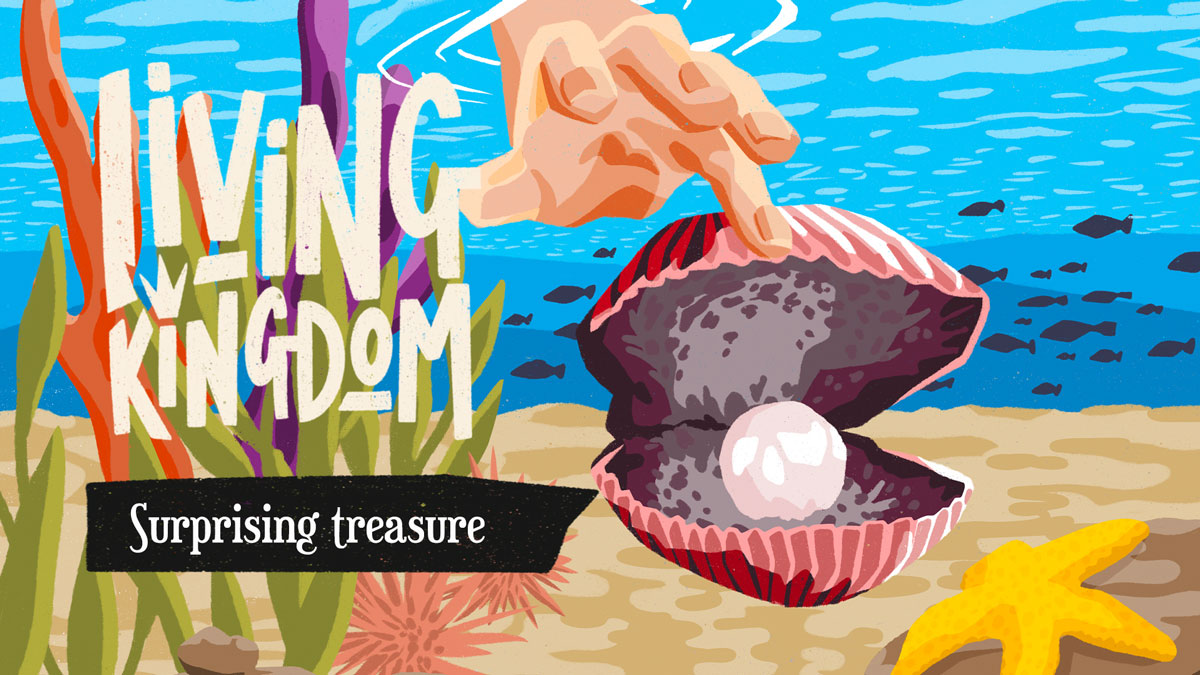The Pearl of Great Price
“Again, the kingdom of heaven is like a merchant seeking beautiful pearls, who, when he had found one pearl of great price, went and sold all that he had and bought it” (Matthew 13:45,46).
An African slave found a pearl named La Peregrina in 1579 in Panama. It is one of the largest, perfectly symmetrical pear-shaped pearls ever found. It became a Spanish crown jewel for more than 200 years, adorned a variety of European queens, became a treasured possession of US actress Elizabeth Taylor, and in December 2011, the pearl was sold for more than $US11 million.1
The Pearl of Puerto is the largest-known pearl in the world, owned by a Filipino fisherman and weighing in at 34 kilograms!2
The ancient story of Cleopatra crushing one large pearl from a pair of earrings and dissolving it in a goblet of wine (or vinegar) before gulping it down in a display of wanton extravagance3 just adds to the mystique about these wonders of nature we call pearls.
And so, we come to Jesus’ parable as told in Matthew 13:45,46. We know this parable as the Parable of the Pearl, also called The Pearl of Great Price. When I think of buying something for a “great price”, I mean that I was able to purchase a camera lens, or a car, or some piece of clothing, at a price that is less than its actual value. In other words, I have purchased a bargain.
But in this parable, it is clear that a “great price” means something entirely different. It means that the cost was enormous, exorbitant, stellar. The merchant went and sold all that he had and bought the pearl.4
In ancient history, pearls held pride of place for value and expense. As Pliny states, “The first place and the topmost rank among all things of price is held by pearls . . .
Their whole value lies in their brilliance, size, roundness, smoothness and weight.”5
So, the pearl in this parable represents something of great beauty, unique character and, understandably, immense value. What could that “something” be?
The memory I hold from sermons and talks about this parable is that Jesus is the pearl of great price. Such an understanding is not uncommon. According to Wikipedia, the pearl in “this parable is generally interpreted as illustrating the great value of the kingdom of heaven.”6
However, rather than this understanding being inspirational and joyful to me, it has been a source of tremendous pressure and frustration. You see, if Jesus and the kingdom of heaven is so valuable, as represented by the pearl, then surely my only sensible response should be to do whatever I can to procure it? But herein lies a problem. Have I pursued the kingdom of heaven with such enthusiasm? No. Have I been willing to sell everything to procure Jesus? Sadly, my answer to this question is often a “no”. And even when I say I am eager to give everything, my lived reality is always something well short of my commitment.
The thoughts and questions that quickly take root in my mind are: I am defective. I must be broken in some way. I do not act according to what I say about the priority and place of Jesus in my life. What is wrong with me? There is a long answer to this question, but that is not the focus of this article. What is most important is what comes next in the story.
Just two sentences tell the story of this parable, yet it holds a strikingly clear and surprisingly wonderful truth.
It begins: “Again, the kingdom of heaven is like . . .” Again? Yes, this parable follows on from other stories that are also talking about the kingdom of heaven. Jesus is sitting in a boat just off the shoreline so that the crowd who came to be with Him that day could all hear what He had to say. So, how does this parable describe the kingdom of heaven? We continue. “Again, the kingdom of heaven is like a merchant . . .” What? I thought that the kingdom of heaven was like a pearl? No. This parable says that the kingdom of heaven is like a merchant. And for what is this merchant looking? It seems that this merchant, representing the kingdom of heaven, is looking for fine pearls.
Does the merchant find any fine pearls? Oh yes. He finds one of great value. It is so valuable that it will cost the merchant everything he owns.
The merchant has no hesitation in participating in the purchase negotiations. He knows the price is high, but he can see the value of the pearl. It will cost him everything, but in his eyes, this exchange will be worth every cent. There is no second-guessing this trade. The merchant acts willingly and decisively and sells everything, and buys the pearl.
What a stunning picture of the kingdom of heaven! Who gives all? Why Jesus does. God does. So, if Jesus is not the pearl of great price, who is? This is not too difficult to figure out. Several parables share this same theme of the kingdom of heaven seeking out lost items—parables such as the Lost Sheep, the Lost Coin and the Prodigal Son.
At the risk of repeating myself, in these parables, the kingdom of heaven is not portrayed as the treasure; instead, the kingdom of heaven is seeking a treasure. The kingdom of heaven is seeking what is lost—dangerously lost in the case of the lost sheep, ignorantly lost in the case of the lost coin, rebelliously lost in the case of the prodigal son. And in this Parable of the Pearl, we learn that what is lost is regarded as a unique and special treasure by God. And not just any “special”; a treasure that is so special it cost everything the merchant had.
Ellen White writes, “In the parable [of the lost sheep], the shepherd goes out to search for one sheep—the very least that can be numbered. So if there had been but one lost soul, Christ would have died for that one.”7
I can hardly believe what I am reading.
I am that fine pearl! You are that fine pearl! Our fallen world is that fine pearl. What a surprising treasure! Who would have thought that God values me so much? Not me! God values you too!
Why is a pearl used to represent what the merchant seeks? Could it be that the merchant of heaven knows that the beauty in every pearl has been hard-won? You see, every pearl is seeded by damage or is seeded by something that does not belong: a flaw, an irritation or an imperfection. But the pearl does not make itself perfect. It cannot make itself beautiful. It plays no part in making itself valuable. Processes unknown and not understood by the pearl itself are at work, over time, to create something unique, beautiful and treasured.
I think of that time when I betrayed trust and broke a heart; that time when I protected my reputation rather than being transparent, open and honest; that time when I lost someone special through death, estrangement, suicide or sickness, and thought my world would end; that time when . . . This list could keep going for pages. The good news is that whatever is on my list—the heartache, the wrong, the hurt, whatever the flaw—all is covered by the nacre of God’s goodness. God the Father cares so much that He applies the mother of pearl—the nacre—over everything and grows a beautiful new treasure.
How glad I am to learn that I am not the merchant.
Why? Well, I get excited when I make the buy of a lifetime only to discover that I’ve purchased glitter—not gold. These “best purchases” of mine inevitably turn into embarrassment and shame. I want to hide these parts of myself, but this parable helps me understand that I no longer need to hide my flaws. To be found by the merchant of heaven is the best thing that could ever happen to me. My defects can be covered in spiritual nacre and be grown into a special treasure for the kingdom of heaven.
How amazing to learn that I am the object of heaven’s attention—attention that makes a judgement about me—not to catch me out, but rather to declare my great value to the kingdom of heaven.
That fills me with joy! How about you?
Craig Mattner is a mathematics and photography teacher at Prescott College Southern, Adelaide, SA.






